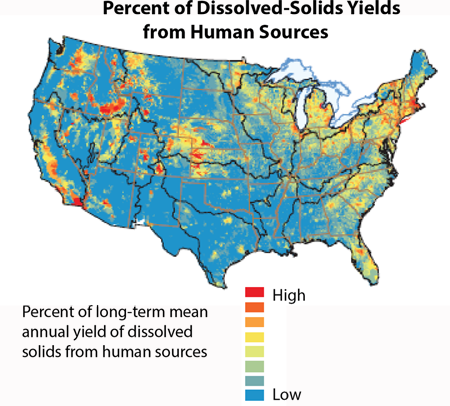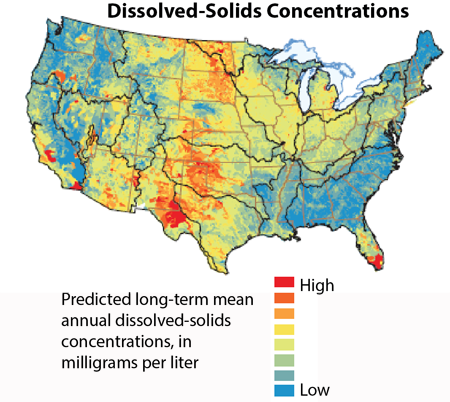National Water-Quality Assessment (NAWQA) Project
The U.S. Geological Survey National Water-Quality Assessment program recently completed a comprehensive nationwide assessment of the sources and concentrations of dissolved solids in streams. This new assessment provides science-based information on where dissolved solids concentrations are elevated and what are the dominant sources contributing to these conditions.
The total amount of dissolved solids delivered to all of the Nationís streams is about 270 million metric tons annually, of which about 71% comes from weathering of rocks and soil, 14% comes from application of road deicers, 10% comes from activities on agricultural lands, and 5% comes from activities on urban lands.
Access the new national dissolved-solids model using the online, interactive SPARROW decision support system to see maps of concentrations, yields, and loads of dissolved solids in streams and to predict how changes in selected sources of dissolved solids within a selected watershed may change loadings to the watershed outlet.
For more information: Report | Decision Support System | Webinar Presentation

Natural weathering of geologic materials is the predominant source of dissolved solids in about 89 percent of the 66,000 stream reaches that were evaluated. Human sources of dissolved solids, such as road deicers, urban lands, and cultivated lands, were the predominant source in about 11 percent of the streams. |

Concentrations of dissolved solids exhibit regional variation in streams across the Nation. Widespread occurrences of higher concentrations are found in streams in an area that extends from west Texas to North Dakota. |